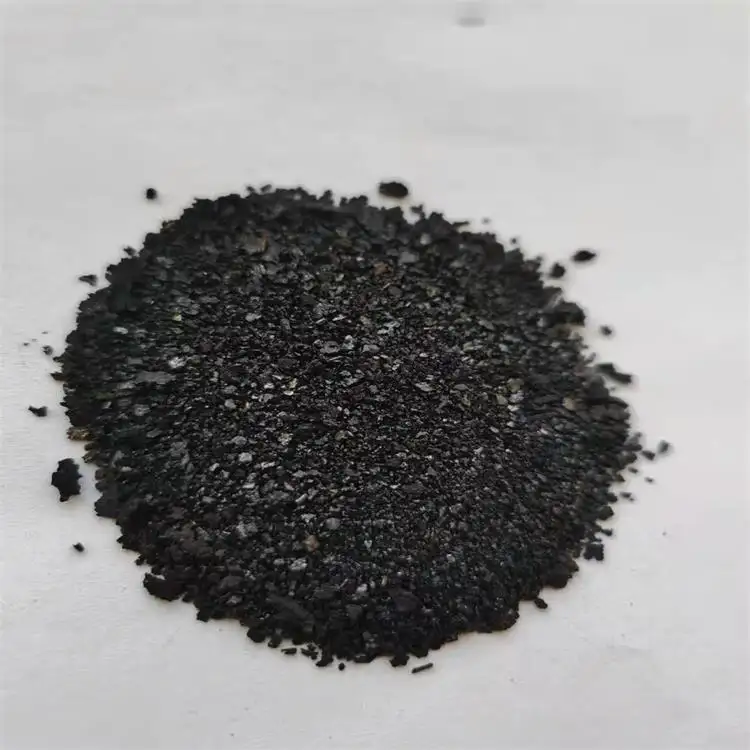Professional Indigo Vat Dye Services for Vibrant and Eco-Friendly Textile Solutions
Indigo VAT Dye Service Reviving Tradition with Modern Techniques
Indigo dyeing is one of the most venerable techniques in textile history, with roots tracing back over 6,000 years. Known for its deep blue hues and versatility, indigo is derived from the plant *Indigofera tinctoria*, among other species. In recent years, the resurgence of interest in sustainable and traditional dyeing practices has brought indigo VAT dye services to the forefront of the textile industry. This article explores what indigo VAT dye services are, their significance, and the benefits they offer modern artisans and businesses.
Understanding Indigo VAT Dyeing
At its core, VAT dyeing is a process that involves dyeing textiles with indigo in a manner that allows for control over the dye intensity and colorfastness. The term VAT comes from the method of preparing the dye in a controlled environment, typically in a vat or a container, where the dye is reduced to its soluble form. When the textile is immersed in the dye vat, it absorbs the color; as it is removed and exposed to air, the dye oxidizes and turns a brilliant blue. This process can be repeated multiple times to achieve desired depths of color.
Unlike some other dyeing methods, indigo VAT dyeing offers exceptional color fastness, meaning the colors won’t fade easily with washing or exposure to sunlight. This quality makes indigo-dyed fabrics not only beautiful but also durable, which is a significant advantage for manufacturers and consumers alike.
The Significance of Indigo VAT Dye Services
The revival of indigo VAT dye services can be attributed to several factors. Firstly, there is an increasing demand for eco-friendly and sustainable textiles. Traditional indigo dyeing is often produced using natural methods, making it a favorable choice for environmentally conscious consumers. This method contrasts sharply with synthetic dyes, which can contain harmful chemicals and have negative environmental impacts.
Additionally, indigo VAT dyeing supports local artisans and traditional textile practices. Many small-scale textile producers, especially in countries like India and Bangladesh, rely on indigo as a source of income. By utilizing indigo VAT dye services, businesses can encourage sustainable practices and preserve cultural heritage while providing artisans with fair compensation for their work.
indigo vat dye service

Benefits of Using Indigo VAT Dye Services
1. Sustainability Using natural indigo and traditional dyeing methods greatly reduces the environmental impact associated with synthetic dyes. Many services now focus on organic farming practices for indigo production, which is a further boon for sustainability.
2. Color Variety While indigo is known for its deep blue shades, the dyeing process can produce a spectrum of beautiful hues depending on the fabric and dyeing techniques used. This versatility allows for a broader range of products.
3. Durability Indigo-dyed fabrics exhibit excellent durability and resistance to fading. This makes them a favorite choice for apparel, home textiles, and accessories, ensuring longevity and reducing waste.
4. Cultural Relevance Engaging with indigo VAT dye services connects consumers and brands with centuries-old traditions, offering storytelling opportunities that resonate with modern ethical consumerism.
5. Customization Many indigo VAT dye services offer customization options, allowing businesses to create unique designs and products that cater to specific market needs or personal preferences.
Conclusion
Indigo VAT dye services are not just a nod to the past; they represent a convergence of tradition and innovation in the textile industry. As the world increasingly shifts towards sustainable practices, embracing the beauty and practicality of indigo dyeing will continue to play a significant role in shaping the future of fashion and textiles. By choosing indigo VAT dye services, consumers and businesses alike contribute to a more sustainable and culturally rich textile landscape, ensuring that the deep blues of indigo endure for generations to come.
-
The Timeless Art of Denim Indigo Dye
NewsJul.01,2025
-
The Rise of Sulfur Dyed Denim
NewsJul.01,2025
-
The Rich Revival of the Best Indigo Dye
NewsJul.01,2025
-
The Enduring Strength of Sulphur Black
NewsJul.01,2025
-
The Ancient Art of Chinese Indigo Dye
NewsJul.01,2025
-
Industry Power of Indigo
NewsJul.01,2025
-
Black Sulfur is Leading the Next Wave
NewsJul.01,2025

Sulphur Black
1.Name: sulphur black; Sulfur Black; Sulphur Black 1;
2.Structure formula:
3.Molecule formula: C6H4N2O5
4.CAS No.: 1326-82-5
5.HS code: 32041911
6.Product specification:Appearance:black phosphorus flakes; black liquid

Bromo Indigo; Vat Bromo-Indigo; C.I.Vat Blue 5
1.Name: Bromo indigo; Vat bromo-indigo; C.I.Vat blue 5;
2.Structure formula:
3.Molecule formula: C16H6Br4N2O2
4.CAS No.: 2475-31-2
5.HS code: 3204151000 6.Major usage and instruction: Be mainly used to dye cotton fabrics.

Indigo Blue Vat Blue
1.Name: indigo blue,vat blue 1,
2.Structure formula:
3.Molecule formula: C16H10N2O2
4.. CAS No.: 482-89-3
5.Molecule weight: 262.62
6.HS code: 3204151000
7.Major usage and instruction: Be mainly used to dye cotton fabrics.

